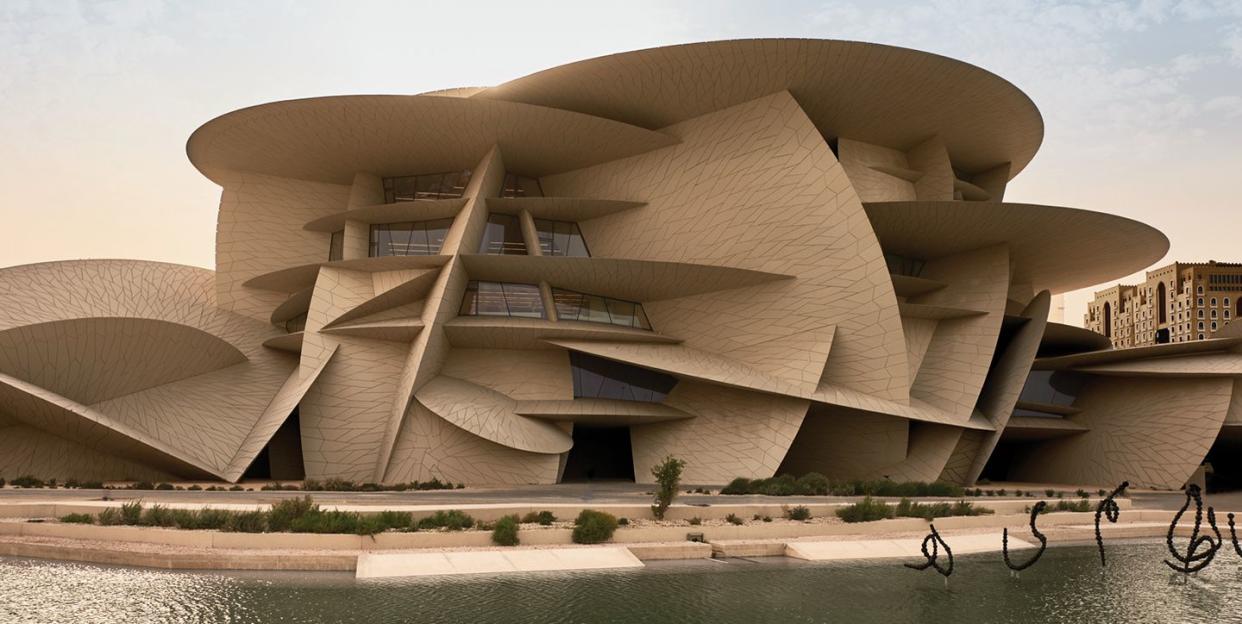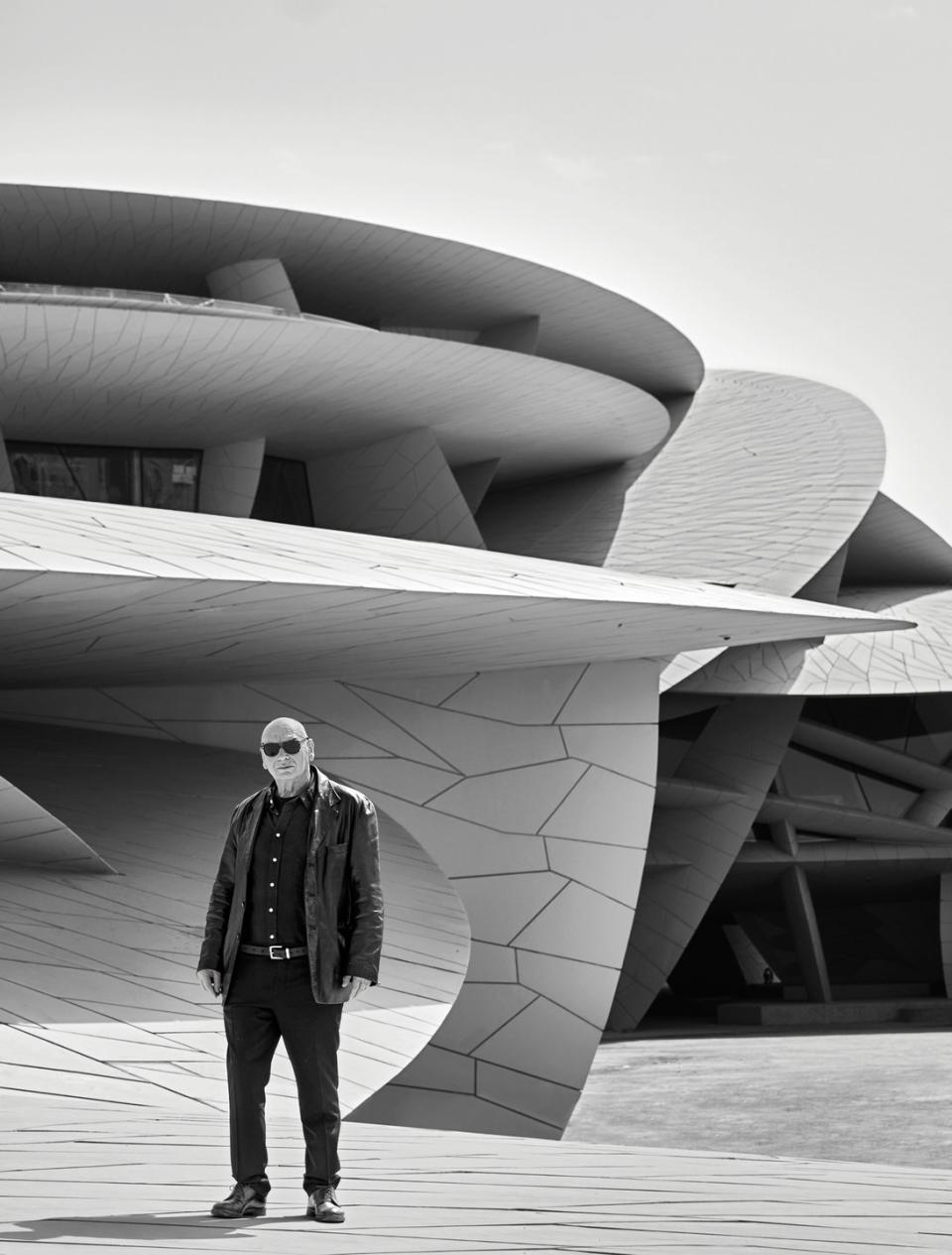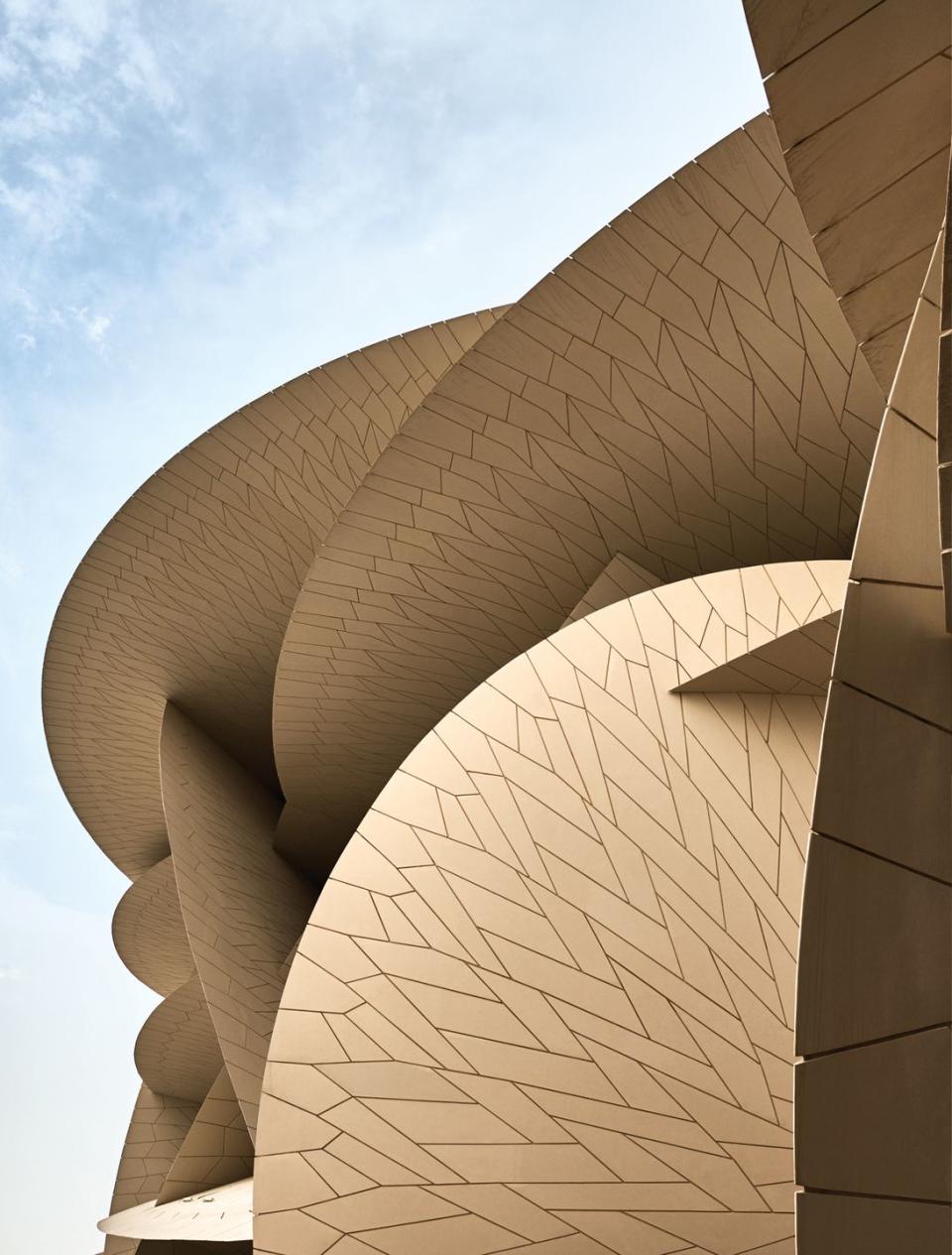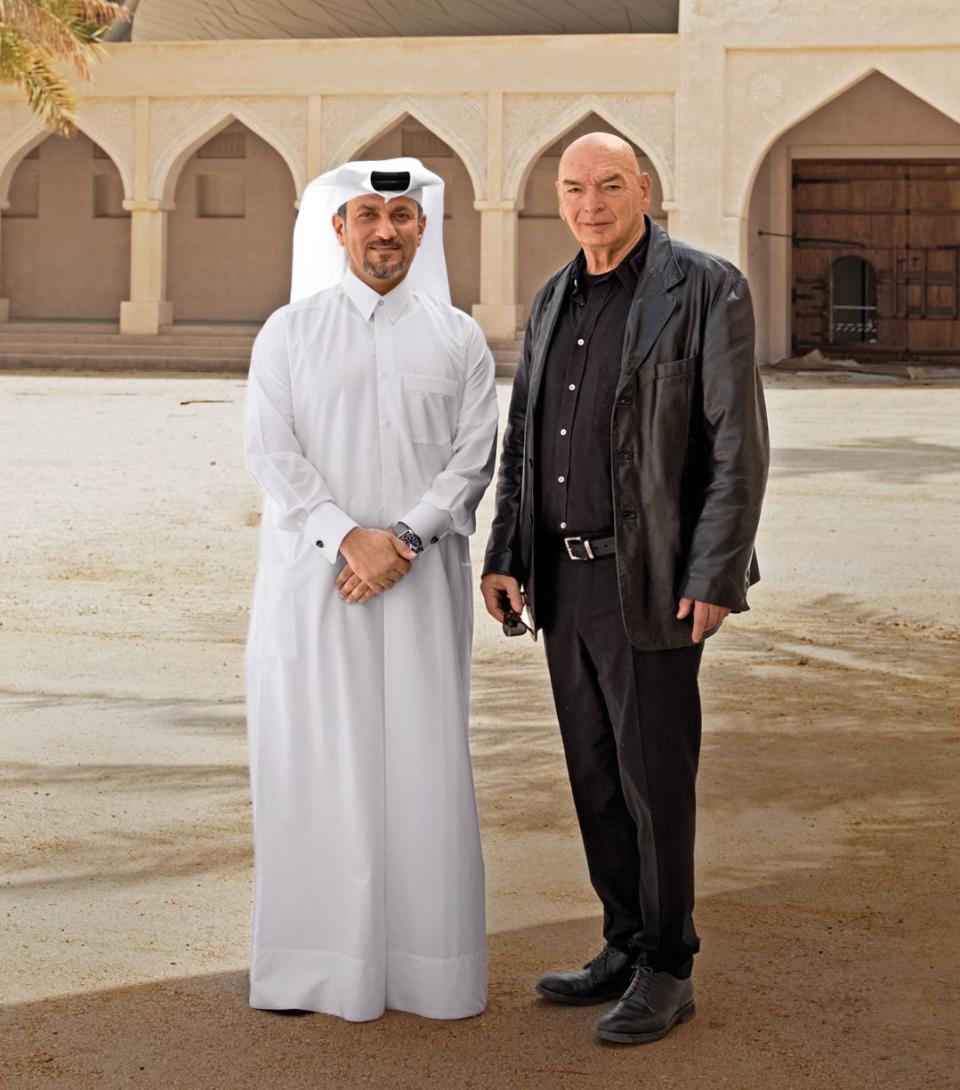ED Gets a First Look at the New National Museum of Qatar

“It's not totally crazy. It just seems crazy.” Jean Nouvel, the Pritzker Prize-winning French architect, is describing the system he used to build the National Museum of Qatar. Made of 250,000 different glass fiber-reinforced concrete elements fixed to a steel frame in curving sections, the building sprawls like scattered, overlapping petals at the edge of the Persian Gulf. The engineering drawings look like Piranesi drafted them after a few double espressos. And yet there is a structural logic, explains Nouvel, who is a master of complexity.
It is mid-February in Doha, the burgeoning capital of Qatar. The National Museum is scheduled to open in about one month, and for the first time the press is allowed a foot in the door. Exterior sketches have been circulating since 2010, but the galleries are a mystery. Was this building to be a showy piece of architectural ambition, a gorgeous sculpture wrapped around a very big box? Or would it be “crazy” inside and out, the kind of museum that drives its curators to despair?
It is thoroughly and completely irregular, Nouvel-clad in his habitual black-declares before leading a group of us on a tour. But it works because the collection, which includes elaborate multimedia displays, was developed in lockstep with the architecture. “It’s not an art museum,” he says.

Rather, the National Museum is a triumphant monument, an encapsulation, and a seminar on Qatar’s past, present, and future. It celebrates the forces that in little more than a century transformed a sparsely populated nomadic crossroads into a multifaceted state with a cultural agenda and a portfolio of attention-demanding architecture.
Located on the Corniche, the highway that skirts Doha’s bay, Nouvel’s museum stands near an early-20th-century palace where members of Qatar’s ruling Al Thani family once lived. From 1975 until 1996, the palace contained the country’s first national museum and a popular aquarium. But in the aughts, the then-emir, Sheikh Hamad bin Khalifa Al Thani, wanted a more potent symbol of national identity. Nouvel, at work on an office tower in Doha (an attenuated capsule sheathed in a silver veil), was commissioned to design a museum evoking the desert-Qatar’s literal foundation-while underscoring the country’s modernity.
As a symbol-and, more extraordinary, a physical model-Nouvel alighted on the desert rose. This cluster of mineral petals is what develops below the desert surface when saltwater massages gypsum and sand until they bond into an elaborate crystal. It is “architecture created by the desert itself,” he explains. “It is the work of the wind, of the sand, for millennia.”
The 560,000-square-foot National Museum holds 11 galleries that narrate the history of Qatar. The chronology, which takes nine-tenths of a mile to unfold, highlights the region’s geological formation, natural habitats, Bedouin culture, and early coastal settlements and their pearl trade. It also wends through Qatar’s unification under the Al Thani family and the 20th-century discoveries of oil and natural gas that propelled a modern economy and one of the highest per capita incomes in the world. More important, it doesn’t shy away from the hard issues: The last gallery, which is still in development, brings visitors up to date on political events like the blockade imposed on Qatar in 2017 by its neighbors.
“Qatar is trying to grow its national museums through an organic process from within,” Sheikha Al Mayassa bint Hamad bin Khalifa Al Thani, the current chairperson of Qatar Museums and Sheikh Hamad’s daughter, has said. “We don’t want to have what there is in the West. We want to build our own identities, create an open dialogue.”
Nouvel designed a museum that behaves like music, with an underlying logic but a persistent sense of expectation. The bloom-like pavilions form a ring that embraces the restored palace like the clasp on a choker. Ceilings swoop. Floors are uneven. And everything, inside and out, is the color of sand. “Every time you look, you say, ‘What is this weird space?’ ” he says. “You don’t know what will happen.”

In the gallery dedicated to natural history and the environment, we pause to watch a dazzling film of a whale shark cavorting in the Persian Gulf. Projected on 360 degrees of slanted, discontinuous walls, the shark glides over the gaps and overlaps. The peripheral is made immersive. The oyster shell becomes as precious as the pearl.
When Nouvel received the commission, “We quickly discovered there was not a lot of material,” he says. The country’s nomadic forebears traveled light. Peggy Loar, previously the head of the Wolfsonian Museum, arrived in 2008 as the first director and worked with conservationists to patch up objects from the old national museum. Some archaeological finds were brought from Al Zubarah, an abandoned 200-year-old coastal trading post 60 miles northwest of Doha. Destined for the museum’s Pearls and Celebrations Gallery was a carpet woven 150 years ago for the maharaja of Baroda in India and embroidered with a million and a half Gulf pearls, plus diamonds, sapphires, emeralds, and rubies.
But the museum’s bespoke films are the real jewels. At the mouth of the gallery about life in the desert, magnified silver-gray sand pours down a wall with a thunderous whisper, and a camel rises shakily from its crouch. Bedouin women carry a tent, and a family and their falcon gather in front of their abode near a fire. Color flares in these monochromatic scenes, directed by the Academy Award-nominated Abderrahmane Sissako, as if a match were struck and quickly extinguished. “They are very organic; they’re like curtains in the gallery,” said Sheikha Amna bint Abdulaziz bin Jassim Al Thani, who took over as the museum’s director in 2012.

A strange thing about the National Museum of Qatar: It cannot take a bad picture. Back outside, I circle the exterior with an iPhone. Each shot captures distinct clusters of desert rose petals, shadows cast by wafer-thin overhangs, and wedges of azure sky.
When Frank Gehry designed the Guggenheim Museum Bilbao, he had nothing to compete with except some rusty infrastructure. Today, as Qatar prepares to host the 2022 FIFA World Cup, Doha has the Museum of Islamic Art designed by I.M. Pei and the Qatar National Library designed by OMA. It has Damien Hirst sculptures and Richard Serra totems. Nouvel’s Doha Tower stands in the sparkling forest of new buildings on the bay.
Over lunch, I ask him if these precedents caused him to raise the bar on ambition. “Bilbao was a wow because we had never before seen vocabulary of this kind,” he says. “But for me, the context has to make sense.”
Well, the National Museum is a wow, he is told.
He looks modestly at his chicken. “Is it?”
('You Might Also Like',)

